How To Winterize & De-Winterize Your Boat
As the boating season winds down, the thought of tucking your boat away for the winter can be bittersweet. But with the right preparation, winterizing your boat doesn’t just protect your investment; it ensures that when spring arrives, you’re ready to hit the water without a hitch. Whether you’re a seasoned boater or new to the process, mastering the steps of winterizing and de-winterizing is essential.
In this article, we’ll walk you through the crucial steps to keep your boat in peak condition, so when the first warm breeze of the year calls, you’ll be ready to answer.
Boats properly stored ashore and winterized are most likely to hit the water without damage and be ready for on-the-water fun come spring.
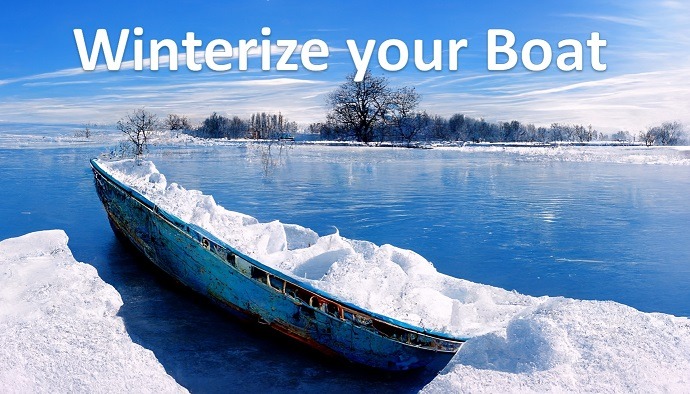
Before temperatures drop below freezing, you must prepare your boat for the coming winter. In simple words, winterizing means draining any leftover water on the boat or replacing it with antifreeze to protect it against very low temperatures. We also have an article on dewinterizing.
In this article, we take a comprehensive look at how to winterize your boat, thus preventing it from damage and unexpected accidents. Our expertise with boats enables us to give you the best advice so you can be fully prepared for the winter.
Table of Contents
Why Should You Winterize Your Boat?
If you live in a cold climate, you need to winterize your boat. Failing to do so can cost you time and money. The volume of freshwater expands by approximately 9% when it freezes and can push outward with a very strong force. This expansion can cause damage to the engine, split hoses, crack fiberglass, or destroy a refrigeration system. Not surprisingly, recovering from this damage can be time-consuming and costly.
By the time your boat has undergone repairs and is back in its working condition, a good chunk of the boating season will have passed. Most boats take an hour to a day to winterize, so it is highly recommended that you take adequate measures before winter begins.
At what temperature should you winterize your boat?
As a general rule, you should winterize your boat before the temperatures drop below 25 degrees Fahrenheit or around -3 degrees Celsius. To stay safe, you should begin winterizing before temperatures drop below freezing point (35 degrees F or 0 degrees C).
Do you have to winterize a boat if you use it?
It is crucial to remember that once you winterize your boat, you will not be able to use it again, even if the weather gets warmer after a couple of weeks. So, if you use your boat regularly, you should wait until it’s the right time to winterize it.
The only exception is if you decide to keep your boat in the water, you can still use it when the weather gets warmer.
What does winterizing a boat consist of?
Winterizing a boat normally includes winterizing systems such as the faucets, water holding tank, and showers; replacing engine oil to get rid of any moisture; stabilizing fuel; protecting internal engine components against harsh winter elements that can result in metal-to-metal contact and corrosion; and lubricating engine fittings to protect them against oxidation, corrosion, and rust.
Boat winterizing kit | Can I winterize my boat myself?
You can winterize your boat yourself, provided you have the right tools and information. Before you get started, contact your boat manufacturer or check the owner’s manual for more precise instructions. You should also consider investing in a winterizing kit, a compact supply of all the necessary tools that you will need to winterize a boat by yourself.
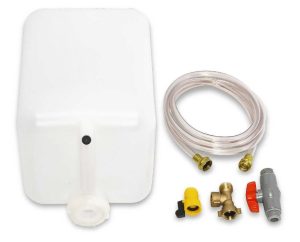
The following guide provides step-by-step instructions to seamlessly winterize your boat before the upcoming winter.
How do you winterize a boat step by step
Whether your vessel has a gas inboard, outboard, or stern drive engine, below is a step-by-step guide that will ensure easy and quick startups when warm weather sets in.
Change the Engine Oil
Acids and moisture in old oil will collect in engine parts while in storage, so you must properly drain it. First, you should warm up the engine while the boat is still in the water, so more contaminated oil will drain out, and the impurities can get flushed easily.
Winterize your yacht engine
You can winterize your yacht engine by flushing it with fresh water, draining the old oil, and replacing it with manufacturer-recommended oil. Next, change the transmission fluid, remove the spark plugs, and add motor oil inside the cylinders. Lastly, fill the cooling system with antifreeze, then cover the yacht properly to prevent moisture flow.
Incorporate a Fuel Stabilizer
Fuel quality deteriorates in only 2 months, causing varnish and gum to collect in your engine. This can lead to hard starting, reduced engine life span, and poor performance. The best way to circumvent these issues is by incorporating a fuel stabilizer.
After adding the fuel stabilizer, fill the tank with new fuel to prevent corrosion-inducing water condensation. Let the engine run for a couple of minutes to warm it up – you can do this either while your boat is in water or when using a fitting made to run the engine with a watering hose.
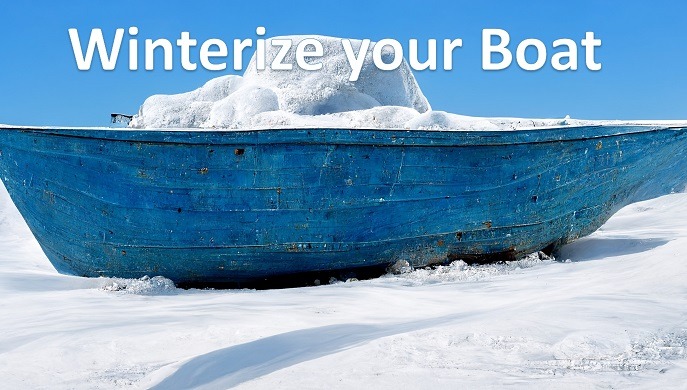
Remember that draining gasoline isn’t enough to prevent varnish from forming in engines since some fuel is always left behind. This is why you need to add a fuel stabilizer to help stop the fuel from deteriorating.
Flush and Drain Cool Water
Drain the water completely from your engine to prevent damage when frozen water expands. For sterndrive and inboard engines, flush them with clean water with the help of water muffs to connect a garden hose to your cooling system. Never make the mistake of running a water engine without water. Next, flush the liquid until the engine reaches its optimum operating temperature.
The next step is to remove the drain plugs, normally located in the engine manifold and block. You may also need to drain leftover water by removing the water pump hose.
Protect Internal Engine Parts
While sitting in storage, engine oil can drain away. This exposes internal engine parts to harsh winter elements, leading to cylinder scuffing and corrosion. To avoid these problems, use a fogging oil spray that will penetrate deep into the engine and add a protective coating of an anti-corrosive compound.
Replace your Gear Oil
Your engine is not the only part of your boat that requires an oil change while winterizing it. Your gear oil also needs to be replaced. Simply drain the old oil from the compartment and add a fresh supply. The new gear oil will help protect your transmission from corrosion and moisture.
Clean the Boat Properly
Once you’ve taken care of the engine and its parts, the next step to winterize your boat involves its looks. You need to do a thorough cleaning before you can store it for the wintertime. Any stains or dirt will worsen if left idle for several weeks or months. Inspect and clean everything, from the trim to the seats and flooring.
If the hull of your boat has barnacles or other forms of marine growth due to sitting in water for months, take the time to wash it down. Once you are done, add a fresh coat of wax to provide it with an extra layer of protection.
Cover and Store the Boat Carefully
Winterizing your boat is incomplete until you properly and carefully cover it for the upcoming winter season. Invest in a high-quality, durable, rugged boat cover to withstand harsh weather conditions. Be sure to store your vessel somewhere free from any moisture or precipitation exposure.
How much gas should I leave in my boat over winter?
Fuel experts recommend storing the fuel tank at 90% of its capacity during winter. This will minimize the probability of condensation and leave room for expansion due to the cold. This criterion applies to all compositions, sizes, and shapes of fuel tanks.
The science behind this is as follows: Less surface area exposed inside the tank and a smaller air volume minimizes the probability of condensation in today’s water-absorbing fuels. Besides filling the gas tank almost full, make sure to add a fuel stabilizer before storing the boat.
Alternatives to winterizing a boat
- Insulate the boat: Insulation reduces the amount of internal condensation and keeps the boat warmer and dryer during winter. Materials best suited for insulating boats include spraying urethane foam, cork, and dry-cell foam.
- Sell your boat
- Shrink-wrap your boat to protect it against mildew and moisture.
- Remove batteries and place them on trickle chargers.
- Get a heater: A good heater can quickly warm the cabins since they are relatively small on boats. Opt for oil-filled radiant heaters since they are safer, and avoid space electrical heaters. An array of heaters is available to keep your boat warm during the winter storage season. Whatever heater you choose, ensure it is engineered and certified for boat use.
- Winterize sea doo jet ski: To winterize a Sea Doo jetski, first clear out all the storage compartments. Next, drain the water by running the engine in short bursts until no more water is coming out. Use the manufacturer’s instructions to flush out the system, as this will remove any silt, algae, and other debris. Add antifreeze to the cooling system of the jetski, lubricate the seals and cables, and then add a stabilizer to the fuel to prevent it from deteriorating. Lastly, remove the battery, thoroughly cover your jet ski, and store it in a safe
Conclusion of Winterizing your boat
In this article, we comprehensively discussed the winterization process for your boat before the upcoming winter season. If you do not want to spend so much time winterizing your boat, you can also use some quick alternatives to keep the boat damage-free while in storage.
#WinterizeYourBoat #WinterizeYourYacht #Winterize #dewinterize #winter #spring
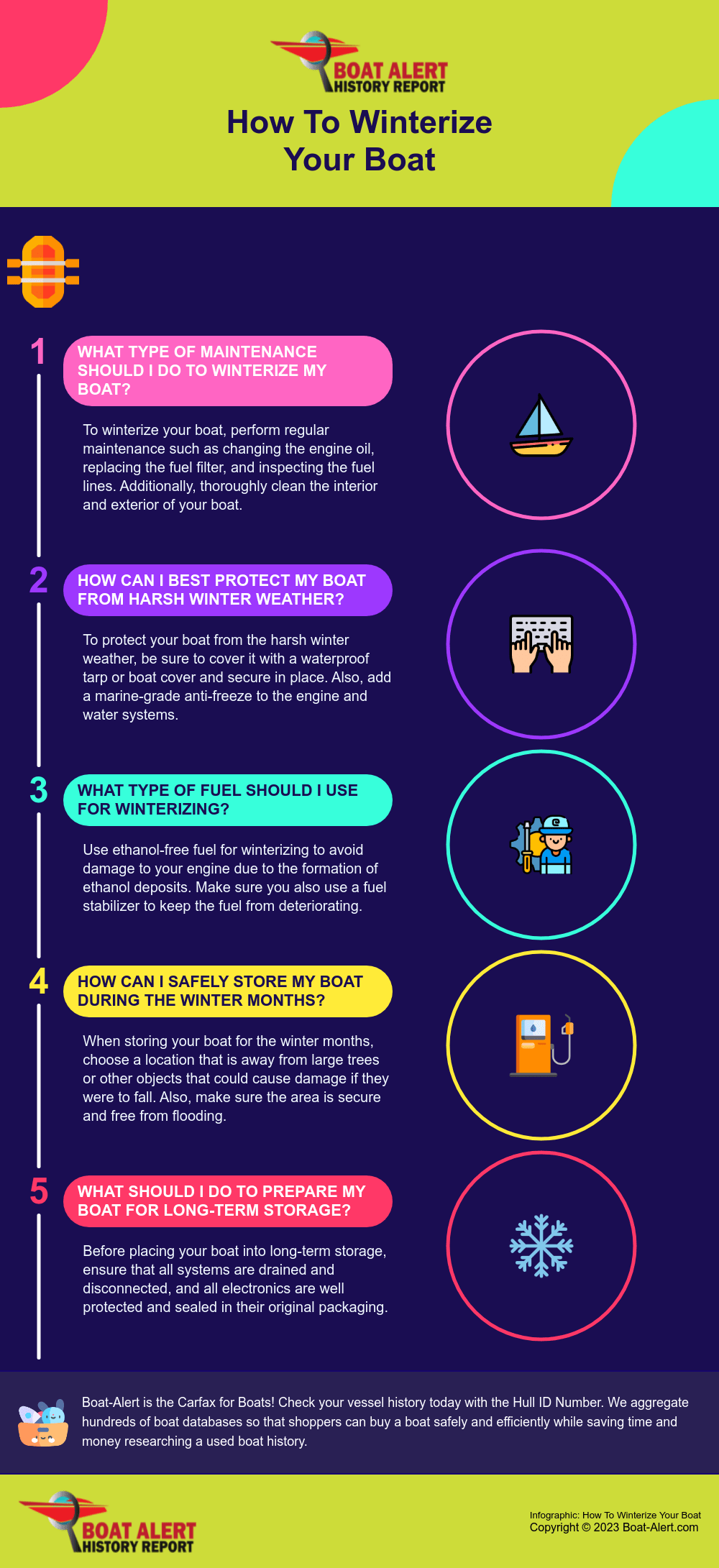
How to Prepare Your Boat for Spring Boating Season | De-winterizing Checklist | Spring Commissioning your Vessel
Dewinterizing your Boat
How to Get Your Boat Ready for Summer – Spring Maintenance
Undoubtedly, during winter the boat is in storage. Now it is spring and you need to prepare for the boating season. In this blog post, we shall be discussing how to prepare your boat for spring boating season.
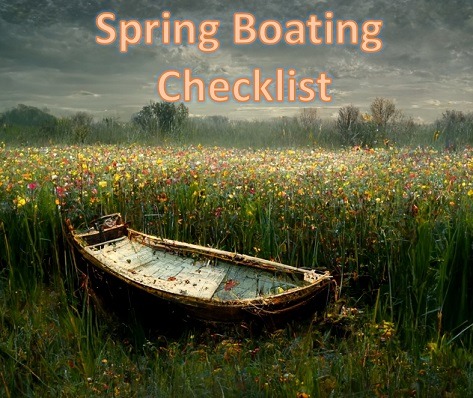
Best way to Prepare your Boat for Summer Boating Season
You may have stored your boat during winter, here is what you must do to have a better, remarkable, and hassle-free spring boating season. Below are the top tips in this ultimate guide to Dewinterizing your boat.
Take A Look at The Necessary Safety Precautions for summer boating
No doubt, the best-maintained boats can go bad or encounter some kind of problem when brought out of storage. You must save yourself this hassle by making sure you take a look at the safety precautions before embarking on a spring boating ride.
Safety equipment like life jackets, flares, and more should be checked before use. Remember, the expiration period of flares is usually 42 months from the manufacturing date.
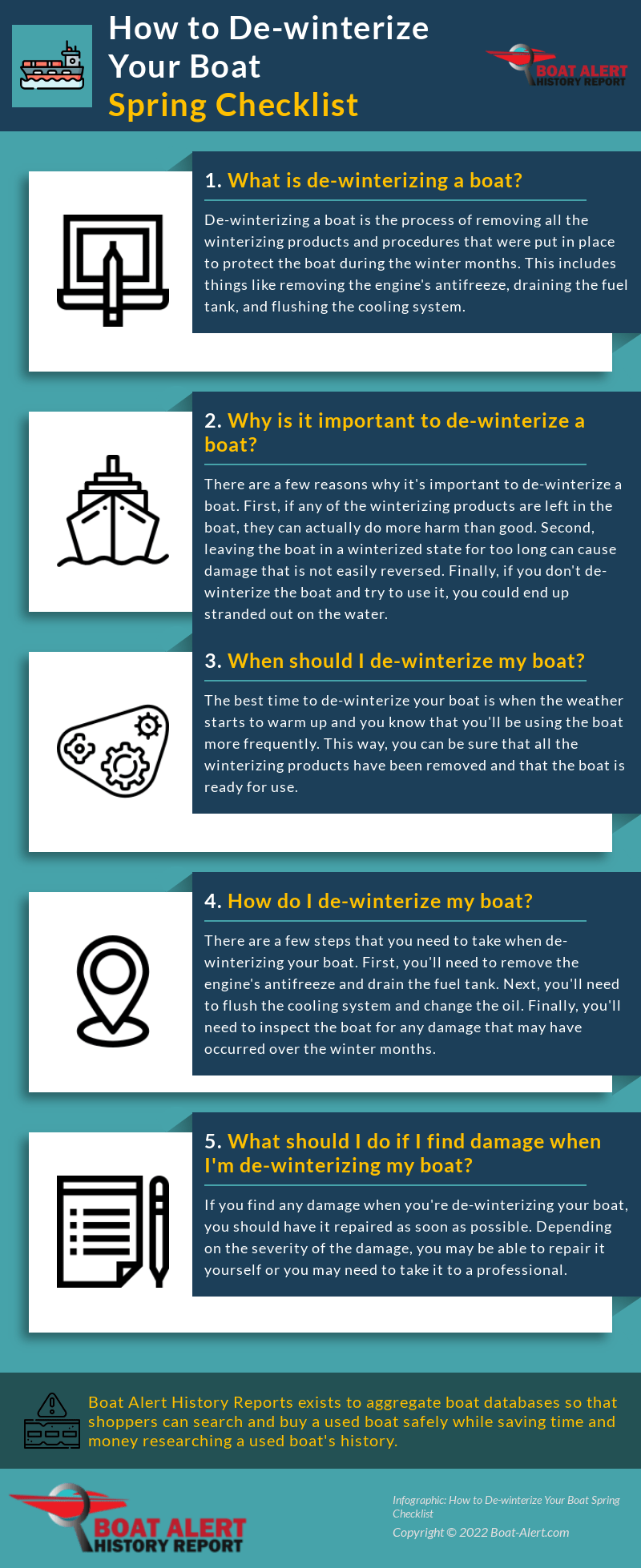
Check Your Fire Extinguishers
You will need to look for the right fire extinguishers before commencing spring boating. There are varieties of fire extinguishers that are vital for spring bating. Make sure you check the expiration of your fire extinguishers and make sure it does not expire soon.
With the US Coast Guard regulations, all boats under 26 feet in length should have a single 5-B or 20-B fire extinguisher, whereas, boats under 40 feet need two fire extinguishers, and boats under 65 feet need three.
Control Your Boat Cables
You will need to check the throttle, shift, and steering cables to know if there are issues that need to be fixed. Although it may be difficult to see the condition, you can try holding the steering and twisting it around, once you hear crunchy sounds, there is a probability that there is rust and will require fixing.
Both the steering, throttle, and shift all go into one sheath which keeps them safe from all kinds of damages, and also makes it difficult to detect if something is wrong with cables.
Get Your Boat Electrical Connection in Check
Once you are preparing your boat for spring rides. It is vital you carefully check the electrical connections. It won’t be nice, to be frustrated on the first day of using your prepped boat during spring.
This frustration can be avoided by making sure you check all the necessary electrical connections, and fix areas that require attention. Check for corrosion on the terminals and ensure all cables are secured and well connected. If you are buying a boat from someone that had it stored in winter, you would need to know the Different Kinds of Boat Surveys.
Boat maintenance for spring / How to Make Spring Easier with Proper Winterizing
Are you worried about how you can easily protect your boat during the off-season? or you are interested in knowing some boat winterizing tips that will make de-winterizing easier? In order to dewinterize properly, you need to have winterized properly in the first place. Here are the main tips for that:
- Carefully Clean Your Boat- You agree with us, that your vessel will need a proper and thorough cleaning after boating season. The vessel has gone through salt and grim and needs to be removed before storage. You can use warm water and soap to do a thorough cleaning of your boat.
- Make Sure You Flush the Engine- The reality is that- the engine needs to be flushed in order to remove saltwater and grim. Also, make sure you refill the coolant system and run the engine for some time to loosen any hiccups or impurities. Also, change the oil, and the filters, and ensure you apply a fogging oil to the carburetor.
- Make Sure you Drain the Boat- Another crucial way to de-winterize your boat is to drain the blige, water tank, pipes, and other areas that hold water. You can even raise the bow to guarantee proper drainage, then spray the blige with the moisture-displacing chemical.
- Oil Accessible Moving Areas- Ensure you grease the steering system and control tools before storage. Make sure you lubricate or rub displaces moisture chemicals on moving parts like links, latches, and hinges.
- Remove The Battery- Another way to de-winterize your boat is to pull at the battery after use. This is important if you are storing the boat outdoors in cold weather. Charge the battery thoroughly and coat the terminals plus the cable with grease. Make sure you store the battery in a safe location for winter.
- Take Off Random Items- Items like fire extinguishers, lifejackets, electronics, and other things that are not permanent to the boat should be removed. Check inside your boat and look out for various items that are not permanent in the boat. Check under the seats, corners, or storage areas. Do remember to bring them back during boating season.
Cover And Store the Boat in Safe Area- Now you can cover the boat and keep it in your preferred location for proper storage. You can use canvas covers or shrink wrapping. The choice is yours.
When can you de-winterize your boat?
The best way to de-winterize a boat is by checking the fuel system and your battery. Ensure you check the battery to get ready for spring. The terminals often corroded. Also check cables if there is a need for replacement or lubrication. Look for cracks in hoses and check the engine and the oil levels. As you set to dive into the summer boating season, ensure you check the lubricant. The warm/cool days of early spring are the perfect time to get a jump on the rest of the spring commissioning process.
How much does it cost to de-winterize your boat?
Some full-service marinas charge around $500 to winterize a boat, however, this frequently incorporates contract wrapping of the vessel as well as de-winterization in the spring. If you do it without anyone’s help, it may be tedious depending on the size of the boat.
Spring Commissioning Checklist for Boats
With boatyards, terraces, marinas, and clubs currently showing signs of life, spring commissioning time has come. Boat Owners Association of The United States (Boat US) has a Spring Commissioning Checklist to assist boaters to begin the season right:
Before You Launch – Prepare Boat for Spring
- Examine and replace hose clamps as need be. Double-clamp fuel lines and exhaust hoses with marine-evaluated stainless steel hose clamps. Keep seacocks shut when you are away.
- Assess all hoses for firmness, decay, breaks, and breaking, and replace any that are defective. Ensure they fit well.
- Investigate prop(s) for dings, pitting, and twisting. Ensure cotter pins are secure.
- Grasp the prop (on inboard drive frameworks) and ensure moving the shaft all over and side to side. In the event that it’s free and can be squirmed, the cutless bearing can be replaced.
- Take a look at the rudderstock to guarantee it hasn’t been bowed. Work the wheel or turner to guarantee the controlling works accurately.
- Investigate the hull for rankles, mutilations, and stress breaks.
- Check your engine intake sea strainer (when properly equipped) isn’t broken or twisted from ice and is free of corrosion, clean, and appropriately got.
- With inboards, carefully check the engine shaft and rudder stuffing boxes for the right change. A stuffing box ought to release something like two drops every moment when the prop shaft is turning.
- Check and grease up seacocks.
- Utilize a garden hose to check for deck spills at ports and hatches. Re-establish caulk or gaskets as the need arise.
- Investigate the bilge pump and float switch to ensure they are both working appropriately.
- Observe stove and remote LPG tanks for free fittings and spilling hoses.
- Investigate dock and anchor lines for scrape and wear.
- Once prepared, make sure that the stern channel plug is installed.
- Once the boat is launched, ensure you check all thru-hulls for spills.
Engines and Fuel Systems to validate for spring boating
- Check fuel lines, including fill and vent hoses, for delicateness, weakness, or breaking. Look at all joints for breaks, and ensure all lines are very much upheld with non-combustible clips or straps with smooth edges.
- Investigate fuel tanks, fuel pumps, and filters for spills. Make sure portable tanks and lines fuel filters are depleted of old fuel before loading up with new fuel. Clean or supplant fuel channels as well as fuel-water separators.
- At regular intervals, eliminate and inspect ventilation systems for corrosion (for inboard-powered and inboard/outboard boats).
- Charge battery.
- Clean and fix electrical connections, particularly the two ends of battery cables. Utilize a wire brush to clean battery terminals, and top up cells with refined water (if relevant).
- Observe the bilge blower hose for leaks and run the blower to affirm the right operation.
Prepare your boat’s outboard motor for summer
Engine Outdrives and Outboards
- Examine elastic outdrive howls for cracked, dried, or weakened spots (particularly in the folds) and supplant if suspect.
- Take a look at the power steering and power trim oil levels.
- Supplant anodes that are more than semi-wasted away.
- Examine the outer jacket of the control cables. Breaks or swelling show corrosion and imply that the cable should be supplanted.
- Observe lower unit oil level and top up as required.
Sailboat Rigging
- Examine swage fittings for breaks and heavy rust (some discoloration is OK). Examine wire halyards and running backstays for “fishhooks” and rust.
- Eliminate tape on turnbuckles and grease up strings, ideally with Teflon. Supplant old tape with new tape.
- In the event that you suspect the center around a chainplate is damp, eliminate the chainplate to examine and make repairs.
Prepare boat trailer for Spring
- Examine tire treads and sidewalls for breaks or the absence of track and supplant as the need might arise. Check air pressure; remember the spare.
- Investigate wheel bearing and repack as the need arise.
- Test all lights and replace any messed-up bulbs or lenses.
- Review the winch to ensure it’s working. Examine hitch chains.
- Examine trailer frame for rust. Sand and paint to forestall further decay.
- Investigate brakes and brake fluid supply.
Check Safety Equipment when de-winterizing your boat
What do you have to do to dewinterise a boat? well this is part of it:
- Look for expiration dates on flares
- Check fire extinguishers. Supplant if more than 12 years of age or the year is unknown. More than 40 million Kidde extinguishers with plastic handles were reviewed on Nov. 2, 2017.
- Make sure you have appropriately measured and wearable life jackets for every traveler, including kids. Take a look at inflatable life jacket cylinders and dissolvable “pill” bobbins in auto-expanding models.
- Test smoke, carbon monoxide, fume, and bilge alarms.
- Check running lights for activity and spare bulb stock.
- Update paper graphs and Chartplotter software.
- Renew first-aid items that might have been utilized last season.
- Look at the operation of VHF radio(s) and that the MMSI number is properly programmed. (BoatU.S. individuals can get a free MMSI number at BoatUS.com/MMSI.)
- Get a free vessel safety check from the U.S. Coast Guard Auxiliary or U.S. Power Squadrons. Figure out more at SafetySeal.net.
For the Dock
- Examine the two sides of the shore power cable connections for burns, which show the cable or the boat’s shore power gulf or the dock’s receptacle should be changed.
- Test ground-fault protection on your private dock and boat, and know how to avert Electric Shock Drowning.
Validate The Paperwork before boating
- Ensure your boat registration is up to date. Always remember your trailer labels.
- Audit your boat insurance policy and update coverage if necessary.
- Give a copy to your marina.
Spring Commissioning advice to Prep a boat for the Summer Boating Season
Getting your boat ready for Spring
Preparing the boat for the spring boating season is an intriguing time for America’s 12 million recreational boaters. Boat Owners Association of The United States (BoatUS) has a Spring Commissioning Checklist to assist boaters to begin the season on a good step, along with a YouTube Spring Fitting Out video library that tells you the best way to carry few tasks, from changing the outdrive oil or fixing broken trailer lights to supplanting zincs or changing a propeller.
Right before You Launch
- Inspect and change hose clamps as required. Twofold clip fuel lines and exhaust hoses with marine-rated stainless steel hose clamps. though not required, it’s a savvy move to double clamp on all hoses – particularly those underneath the waterline.
- Review all hoses for firmness, decay, breaks, and breaking, and change faulty ones. Ensure they fit secured.
- Check prop(s) for dings, pitting, and bending. Ensure cotter pins are secure.
- Grip the prop (on the inboard drive system) and move the shaft all over and side to side. Once it’s free and can be wiggled, the cutless bearing should be changed.
- Examine the rudderstock to guarantee it hasn’t been bent. Operate the tiller or wheel to guarantee the steering works well.
Dewinterizing Your Boat: Top Steps for Your Spring Boat Inspection
- Examine the hull for rankles, twists, and stress breaks. Ensure your engine intake sea strainer. It should be properly secured.
- With inboards, examine the engine shaft and rudder stuffing boxes for proper adjustment. A stuffing box ought to lick not more than two drops when the prop shaft is turning.
- Examine grease and exercise seacocks. You can use a garden hose to check for deck spills at ports and hatches. Endeavor to renew caulk or gaskets as the need arises. Test and examine the float switch and bilge pump to ensure they’re both working well. Also, observe stove and remote LPG tanks for loose fittings and leaking hoses. Review dock and anchor lines for chafe and wear. If equipped, guarantee that the stern drain plug is installed. Once the boat is launched, ensure you check all thru-hulls for spills.
Engines and Fuel Systems to Prepare Boat for Spring:
Examine fuel lines, including fill and vent hoses, for softness, fragility, or breaking. Take a look at all joints for leaks, and ensure all lines are upheld with non-combustible clips or straps with smooth edges. Examine fuel tanks, filters, and fuel pumps for spills. Make sure portable tanks and lines are depleted of old fuel before loading new fuel. Clean or change fuel filters as well as fuel-water separators in the event that not done before winterization.
At regular intervals, eliminate and examine exhaust manifolds for corrosion. This is for inboard-powered and inboard/outboard boats.
Have Your Boat Professionally Inspected – Spring Boating Checklist
- Charge Battery: Tighten and clean electrical connections, particularly the two ends of the battery cables. Make use of a wire brush to clean battery terminals, and top up cells with distilled water (if relevant). Examine the bilge blower hose for leaks and run the blower to affirm the ideal operation.
- Engine Outdrives and Outboards: examine elastic outdrive bellows for cracked, dried as well as crumbled spots (particularly in the folds) and supplant if suspect. Observe power steering and power trim oil levels. Change anodes/zincs that are wasted.
- Investigate the outer jacket of control cables. Swelling or cracks display the sign of corrosion implying that-the cable must be changed. Examine lower unit oil level and top up as required.
- Sailboat Rigging: Check swage fittings for heavy rust and cracks (some discoloration is OK). Review wire halyards and running backstays for “fishhooks” and rust. Eliminate tape on turnbuckles and grease up threads, ideally with Teflon.
Change old tape with new tape however, don’t wrap airtight. In the event that you suspect the core around a chainplate is damp, eliminate the chainplate to examine and make repairs.
Trailers: Inspect tire tracks and sidewalls for cracks or absence of tread and supplant as required. always check air pressure and always remember the spare.
- Review wheel bearings and repack as needs be.
- Test all lights and change any bad bulbs or lenses.
- Investigate the winch to ensure it’s working. Examine hitch chains.
- Review trailer frame for rust. Sand and paint to forestall further weakening.
- Review brakes and brake fluid reservoir.
Other things you should inspect before launching your boat for the spring season:
- Test the bilge pump to ensure it runs properly.
- Test the trim tabs, especially if you intend to run heavy.
- Check to make sure all safety equipment is on board and not expired. This includes flares, safety jackets, fire extinguishers, and distress signals.
- Don’t forget to update your fishing and boating permits, and boat registration.
- What are the conditions of your dock lines? Anchor line? Bumpers?
- Check lighting fixtures including navigational lights, and ensure you have spare bulbs just in case.
- If you aren’t keeping your boat in the water, don’t forget to go over the trailer. Look at the rollers and pads, lubricate the wheels and winch, test the lights and brakes and check the safety chain.
Conclusion on Dewinterizing a vessel
On the final note, we have covered this very comprehensive checklist to prepare your boat for spring and de-winterize it. You should also check with your manufacturer for more specific recommendations depending on the boat type, engine type, and size of your vessel. It sometimes depends on how and where your boat was stored during the season and what extra precautions you would need to take.
#dewinterize #boat #summer #prepare #BoatMaintenance
Strategies for preventing boat theft during winter storage
Use Anti-Theft Devices: Consider installing alarm systems, exterior motion-activated lighting, and tracking devices to further protect your boat.
Remove Valuables: Take home all removable electronics, gear, and registration documents. Record model and serial numbers of onboard items for insurance purposes.
Secure the Boat: Use deadbolts, padlocks, and auxiliary locks on doors, hatches, and lockers. Don’t leave keys or ownership papers on the boat.
Storage Precautions: Store boats on trailers with the tongue facing away from the street. Consider removing a wheel or using hitch receiver locks.
Store PWCs and small outboards in secure locations like a locked garage.
Remove and store outdrives or install locks on larger outboards.
Marina Security: Ensure marinas have locked gates, good lighting, and security cameras. Boat owners should know their dock neighbors and report suspicious activity.
Trailer Security: Chain the trailer to a secure object, remove wheels or use wheel locks, and store the boat out of sight if possible.
Dock Security: Tie the boat securely, disable the engine when not in use, and use special locking bolts for outboards.
Be Cautious When Buying Boats: Verify the Hull Identification Number (HIN) and registration numbers. Be wary of deals that seem too good to be true or have discrepancies in documentation.
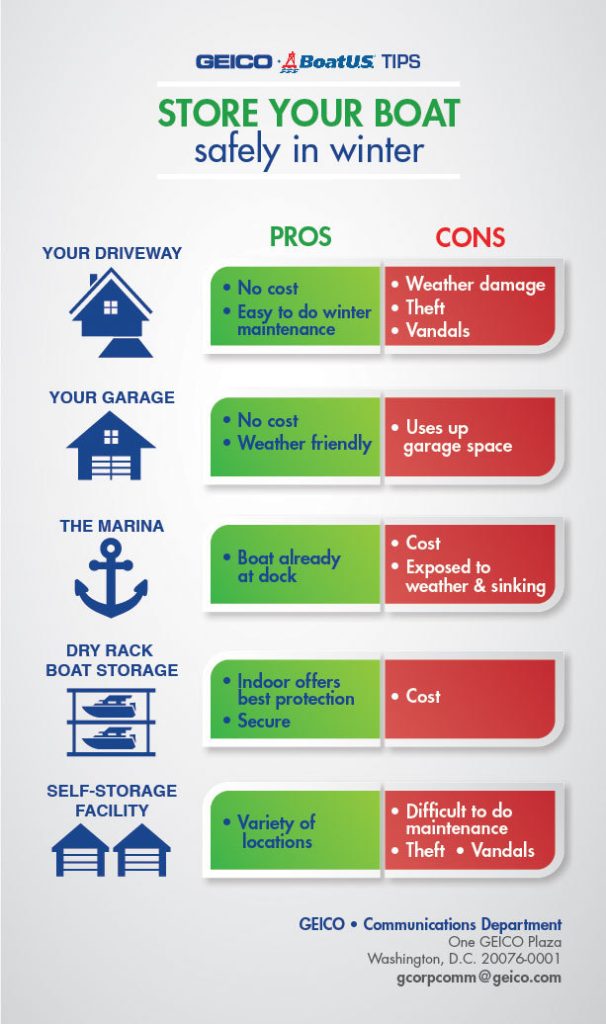
Make your vessel harder to steal:
Is your boat length 25 feet or less and it has an outboard engine? did you store it on a trailer during winter? If you said yes, then your boat is at high risk for theft. Data coming from a 5-year research from “BoatUS” insurance claims data put 75 percent of all such boats as stolen. So to protect your boat from theft, you need to be different from the above description. Here are more things to do to make your boat harder to steal:
- Put multiple locks so that someone else’s boat more attractive than yours.
- Don’t leave your boat keys stored on the boat. Not even in a ‘good hiding place’.
- Make the trailer impossible to take or move by removing the tongue hitch or the trailer tires. Also, park your boat in the driveway with the hitch facing the street and remove the trailer lights.
- Hide the boat as much as possible. don’t put any “for sale” sign. Put a full winter cover.
- Check out new anti-theft technologies.
- Install an alarm system.
- Install exterior lighting that is motion-activated around the area.
- Use a tracking device.
Categories: To learn more about Boat-Alert.com History Reports for used boats and boat vin visit: www.Boat-Alert.com